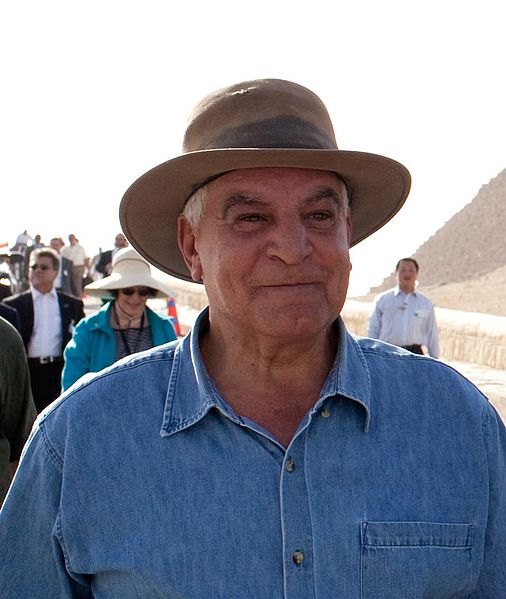
Egyptian archaeologist and former Antiquities Minister Zahi Hawass has signed his new book about King Ramses II in an event held at the Houston Museum of Natural Sciences in Texas, US.
This is where Hawass gave a lecture on the recent archaeological discoveries in Luxor, attended by 2,500 people.
During the lecture, Hawass said that the history of the lost golden city in Luxor dates back to the reign of King Amenhotep III and it continued to be used by Tutankhamun, that is, 3000 years ago.
Excavations began in this area to search for the mortuary temple of King Tutankhamun, as the temples of Horemheb and Ai had previously been found there.
Hawass said archaeologists found in the area the largest city ever in Egypt, which was founded by one of the greatest rulers of Egypt, King Amenhotep III, the ninth king of the Eighteenth Dynasty, who ruled Egypt from 1391 BC until 1353 BC.
His son and future heir to the throne, Amenhotep IV or Akhenaten, shared the last eight years of his reign with him,
Hawass said he spoke about his participation in re-announcing an important archaeological discovery in the archaeological area of Al-Ghuraifa in Minya Governorate, on Discovery Channel along with explorer Josh Gates.
Gates was given access to an ancient Egyptian secret chamber, first opened live on the Discovery Channel, he said.
Hawass opened a coffin for the first time with Gates, the star of the “Expedition Unknown” program, broadcast on Discovery Channel, stressing that the tomb was a very important place for two reasons, because it was not opened before and because it belonged to a a complete ancient Egyptian family.
He added the mummy found inside the sarcophagus dated to 3,000 years ago.




